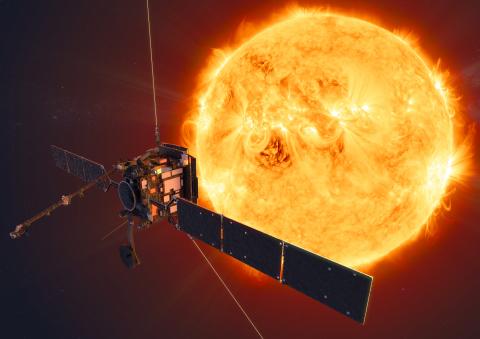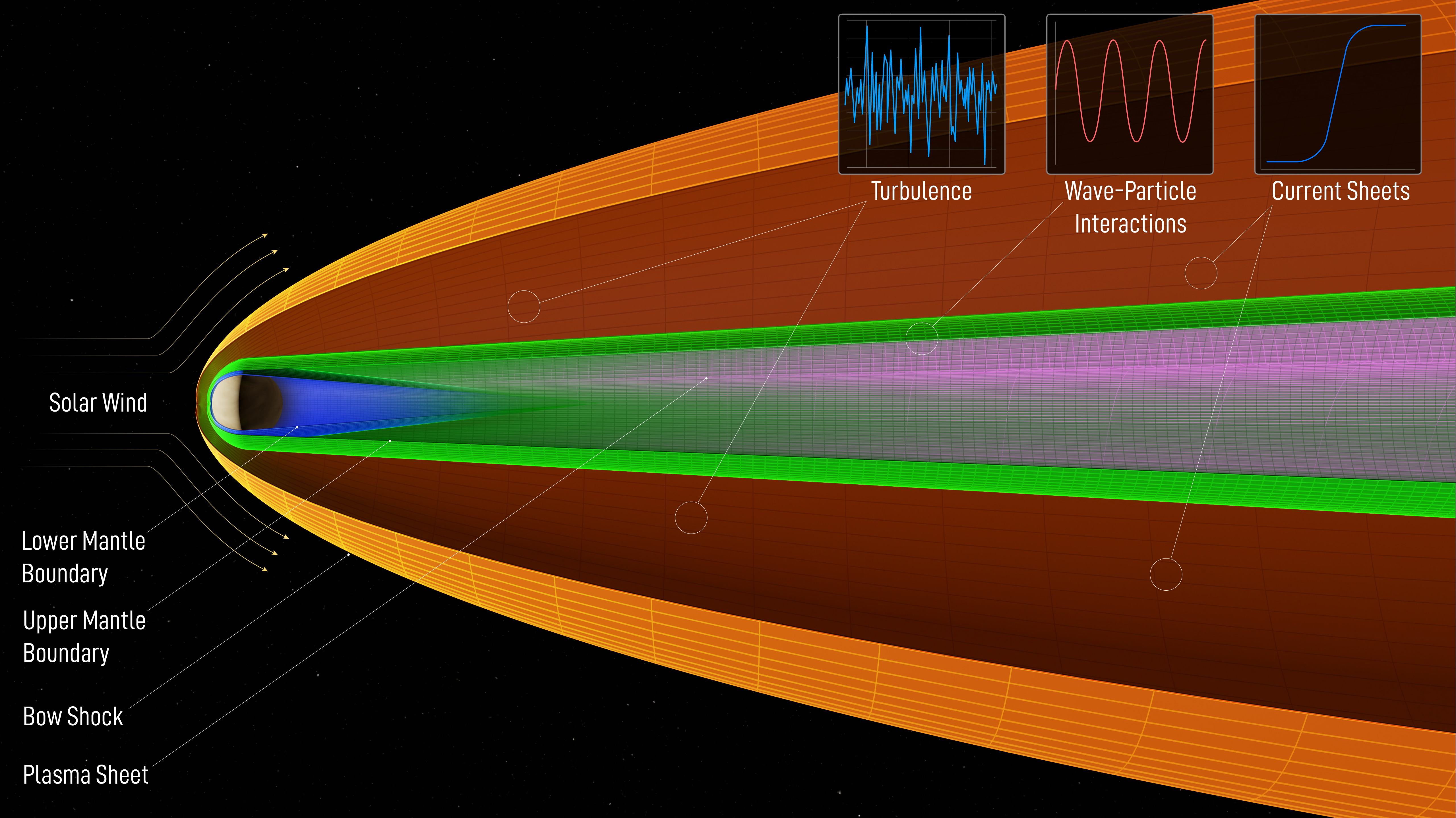Solar Orbiter, a cooperative mission between NASA and the European Space Agency (ESA), will provide groundbreaking new discoveries about the Sun — including the closest images ever of the Sun and the first images of its poles. But the mission is also making some new discoveries about our next-door planetary neighbor Venus.
A new analysis of Solar Orbiter data collected during its first flyby of Venus last December shows that the planet’s unique magnetic environment, which is not generated by the planet, is still robust enough to accelerate particles to millions of miles per hour. Scientists say this finding, published online May 3, 2021, in Astronomy & Astrophysics, underscores the importance of studying the diversity of magnetic fields in the universe and could be valuable for studying planets in other solar systems.

Unlike Earth, which has an intrinsic magnetic field from the sloshing, molten material inside its core, Venus generates its magnetic field from the interaction of the Sun’s solar wind with the planet’s ionosphere, the atmospheric region filled with charged atoms. Those charged atoms create electric currents. As the solar wind drapes over Venus, it interacts with those currents to produce a full-fledged magnetosphere around the planet.
“It’s kind of this weird, induced magnetosphere,” said Robert Allen, a space physicist at the Johns Hopkins Applied Physics Laboratory in Laurel, Maryland, and the study’s lead author.
Although scientists knew about this unusual magnetosphere from Venus missions flown from the 1960s to the 1980s, there are still many unknowns. The solar wind, for example, drags a planet’s magnetosphere behind the planet to form a “tail,” known as a magnetotail. But how far can an induced magnetosphere extend before it falls apart?
“It’s a much more unstable system,” twisting and undulating with the solar wind, Allen explained.
Magnetic fields also accelerate charged particles, such as electrons and protons. But does an induced magnetosphere accelerate particles the same way — and to the same speeds — as an intrinsic one?
That’s where Solar Orbiter came in.
“Solar Orbiter’s mission will take it out of the ecliptic plane where the planets orbit in order to see the Sun’s poles,” said Teresa Nieves-Chinchilla, project scientist for Solar Orbiter at NASA’s Goddard Space Flight Center in Greenbelt, Maryland. “But to do that, we need Venus’ help.”
Whereas other spacecraft, including Parker Solar Probe and MESSENGER, slip around Venus using its gravity to either propel or slow the spacecraft, Solar Orbiter came from behind the planet and flew over its north pole to crank the spacecraft out of the solar system’s ecliptic plane so it can view the Sun’s poles.
“We were fortunate to have this trajectory that nobody else wanted to have,” Allen said with a laugh. “It’s the nature of how we were using this flyby that led us to this area that has kind of been untapped.”
Solar Orbiter found that Venus’ magnetic field extends at least 188,000 miles behind the planet — about the distance from Earth to the Moon. That’s small relative to Earth’s magnetotail, which extends more than twice that distance. Despite the magnetic field’s size and instability, Solar Orbiter found it was accelerating particles to over 5 million mph that far from the planet.

The team identified multiple mechanisms propelling the particles, all of which are found in magnetospheres like Earth’s. Waves traveling along the magnetic field lines, for example, sometimes matched the rate that charged particles twirled around those lines, giving the particles an extra push. In other cases, turbulence in the magnetic field or particles trapped within current sheets — electric currents confined to a surface — passed on enough energy that particles could come flying out at up to almost 7 million mph.
“The fact that such a relatively small system still has that many mechanisms that accelerate particles to this energy range, to me, is surprising and really interesting,” said George Ho, an APL space physicist and principal investigator of the Suprathermal Ion Spectrograph (SIS) instrument that is part of the Energetic Particle Detector instrument suite on Solar Orbiter.
Knowing they exist even in this induced magnetic field is revealing. It’s part of a greater effort to understand the entire zoo of magnetospheres in the universe, Ho said, an effort that can help us understand what magnetic phenomena might be happening around exoplanets in other solar systems, which are still impossible to observe directly.
“We know in our system Venus is the only planet with this kind of setup,” Allen said. “But looking at all the exoplanets we’ve discovered, who’s to say what we’re going to see once we can actually start probing magnetospheres around exoplanets.”
Solar Orbiter will fly by Venus again this August, just a day before BepiColombo, the ESA and Japan Aerospace Exploration Agency-led mission to Mercury, will also swing past the planet. Both spacecraft will collect data on Venus along the way, giving scientists a rare two-point view of how these phenomena change over time and how they differ in front of and behind the planet.
Banner image: A contrast-enhanced version of an image of Venus taken by Mariner 10 in February 1974. Venus’ densely packed atmosphere is responsible for the planet’s unusual induced magnetosphere. Credit: NASA/Jet Propulsion Laboratory-Caltech
Related Topics
For Media Inquiries
For all media inquiries, including permission to use images or video in our gallery, please contact:
Michael Buckley
All Media Resources

